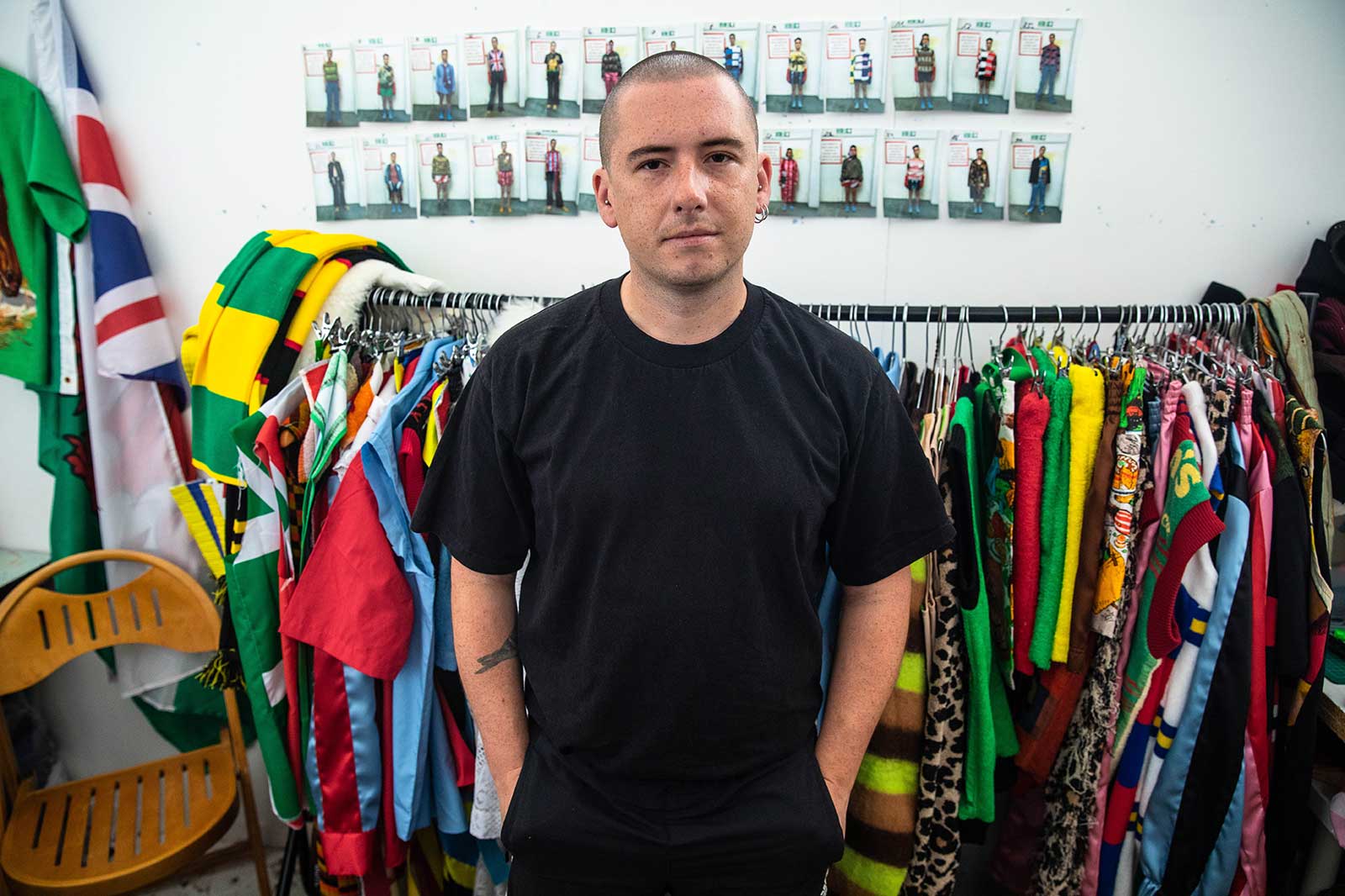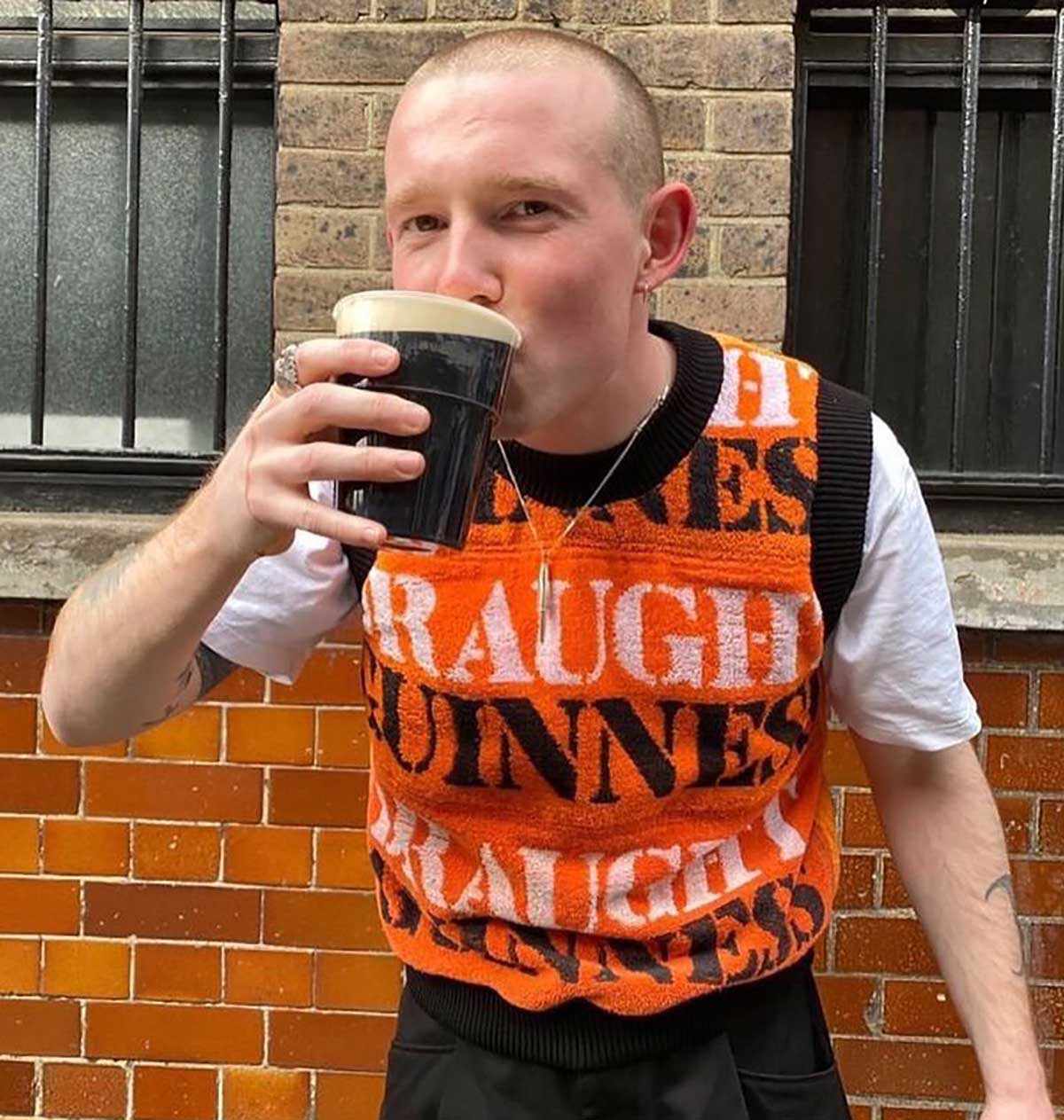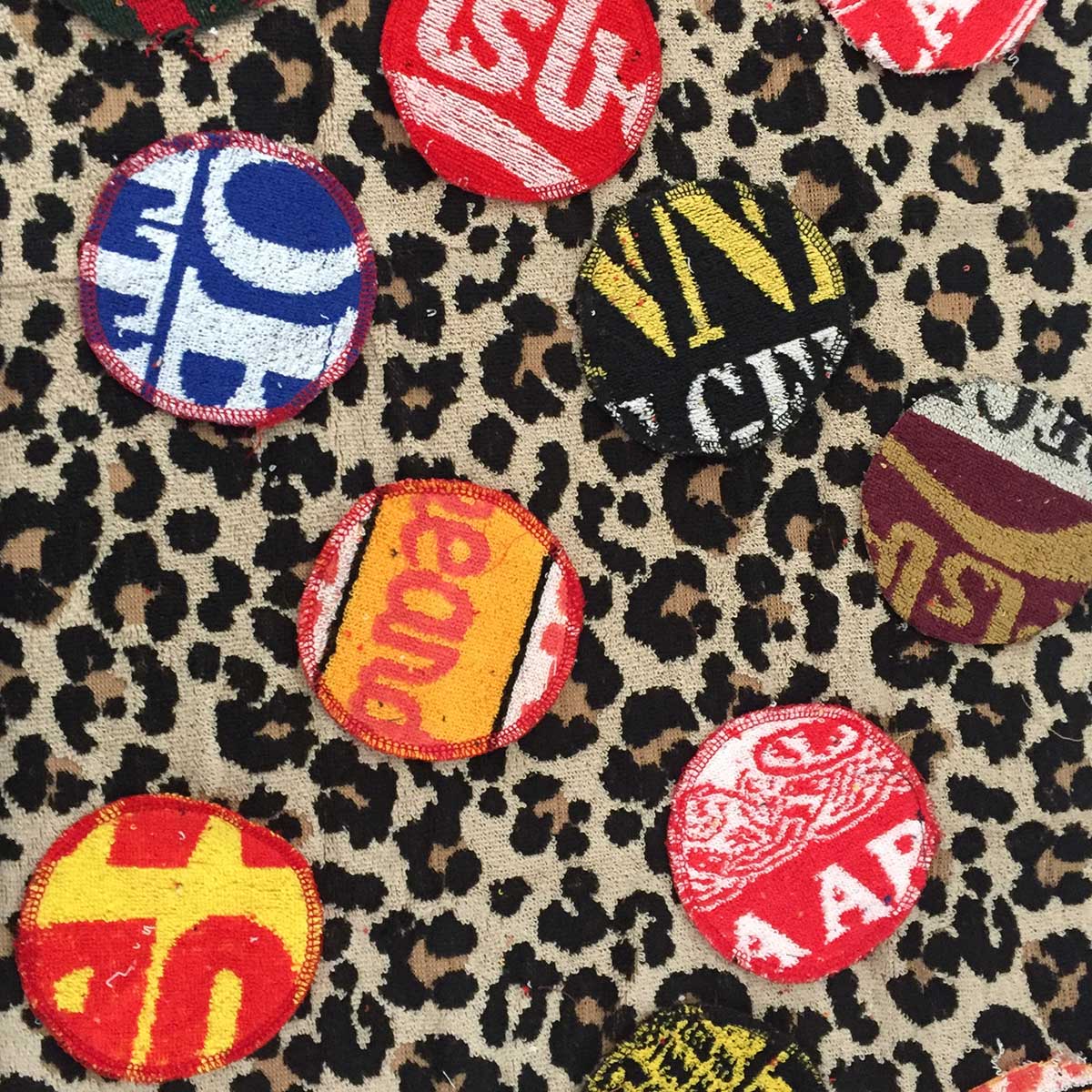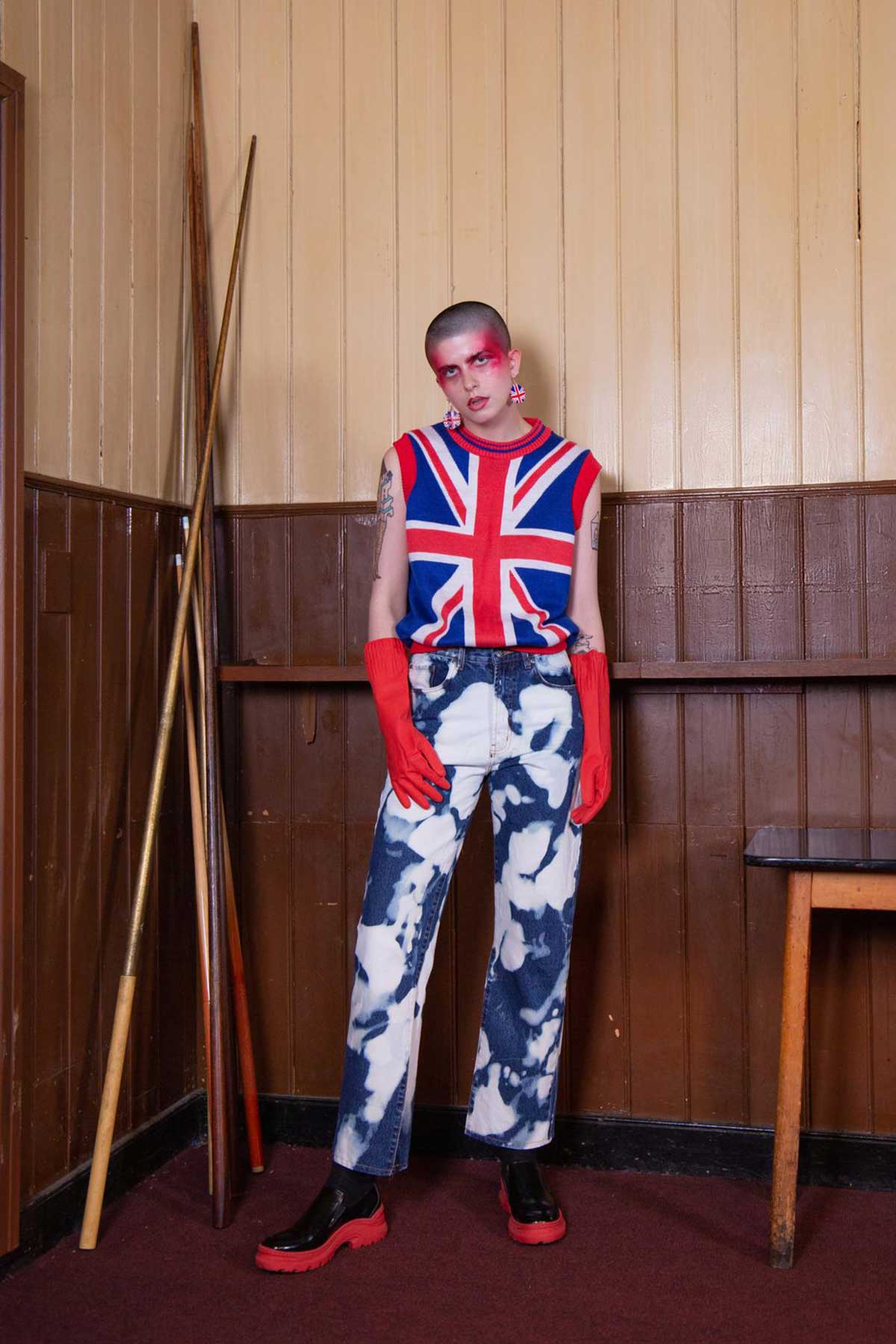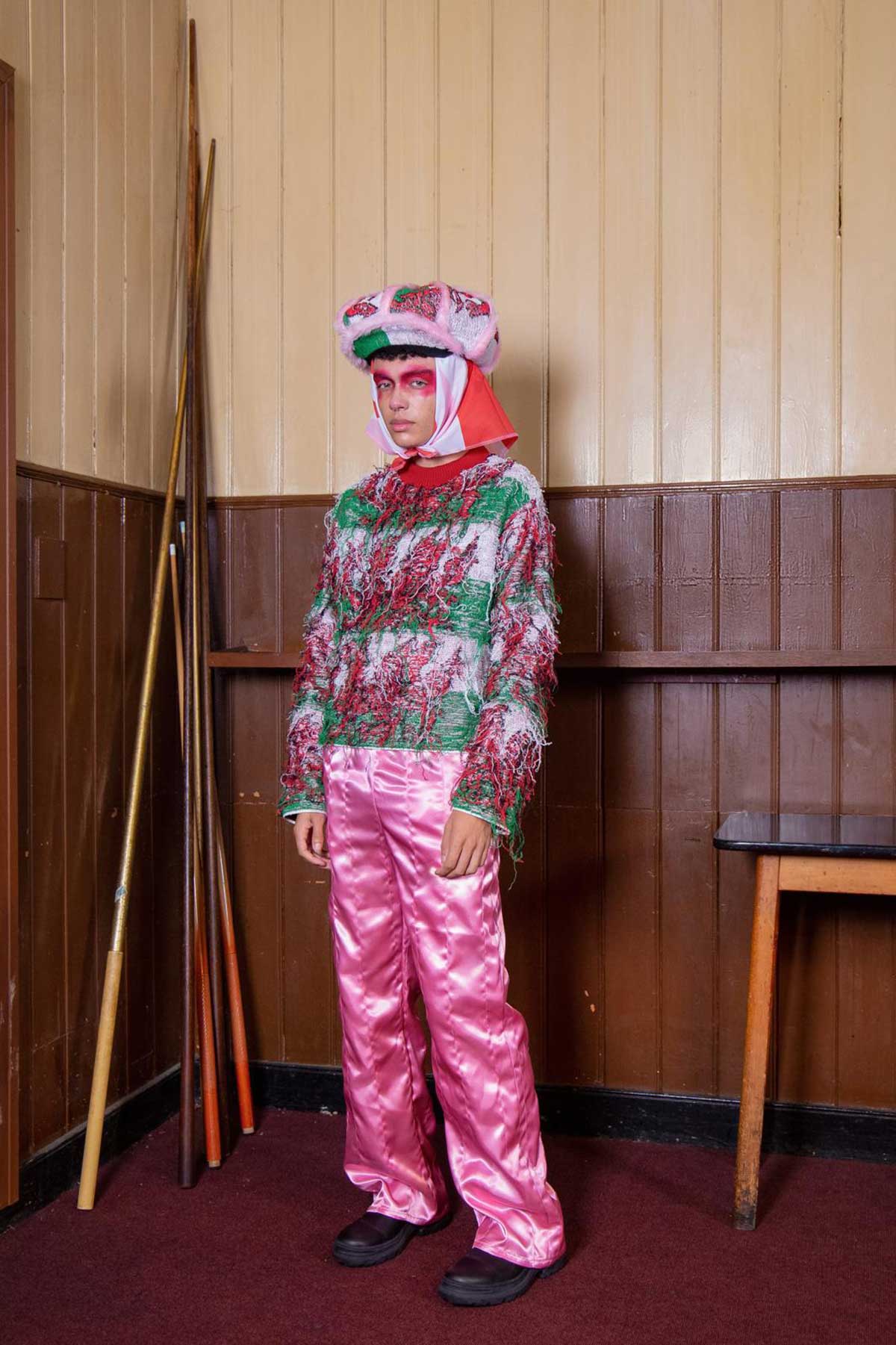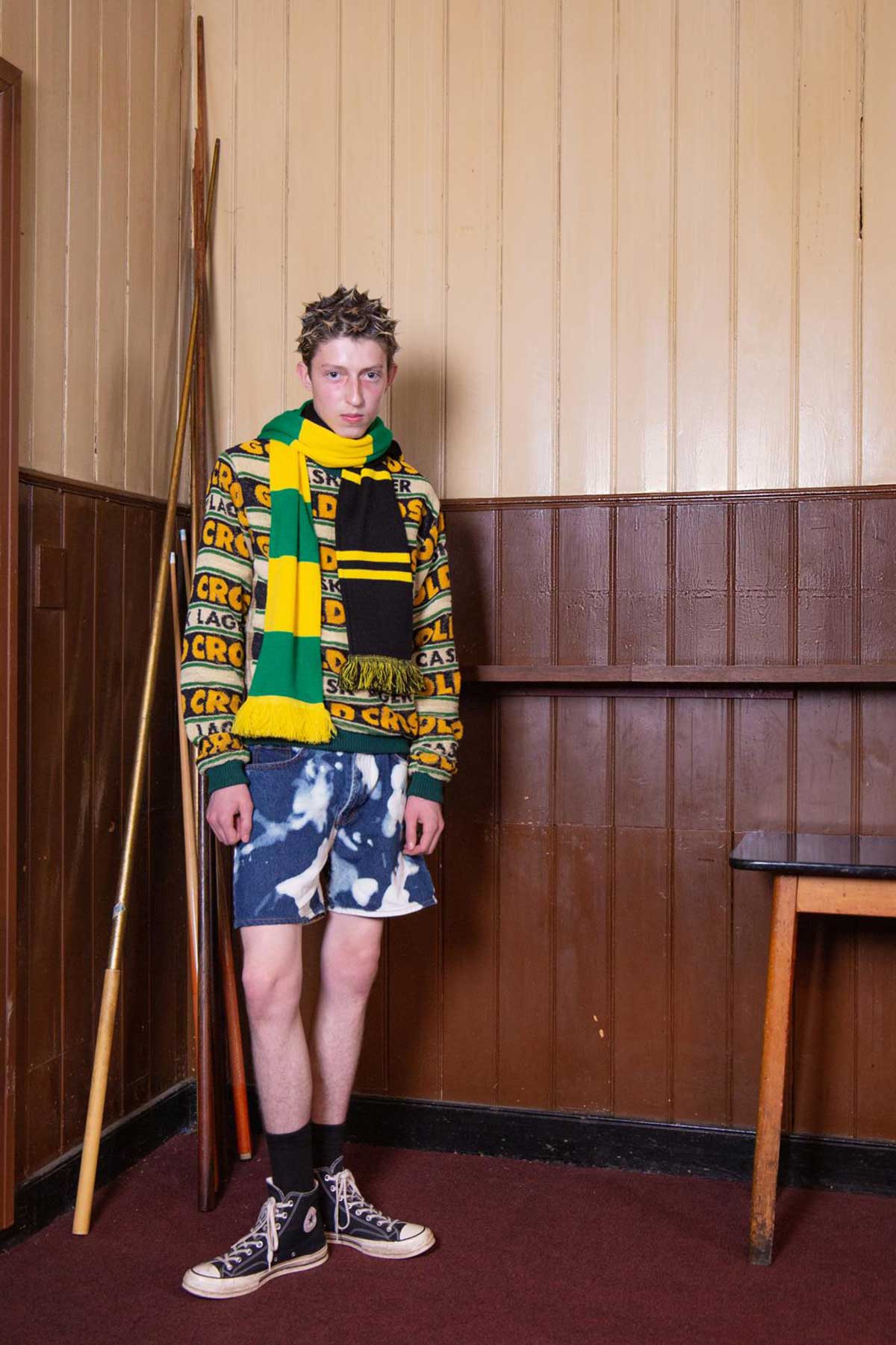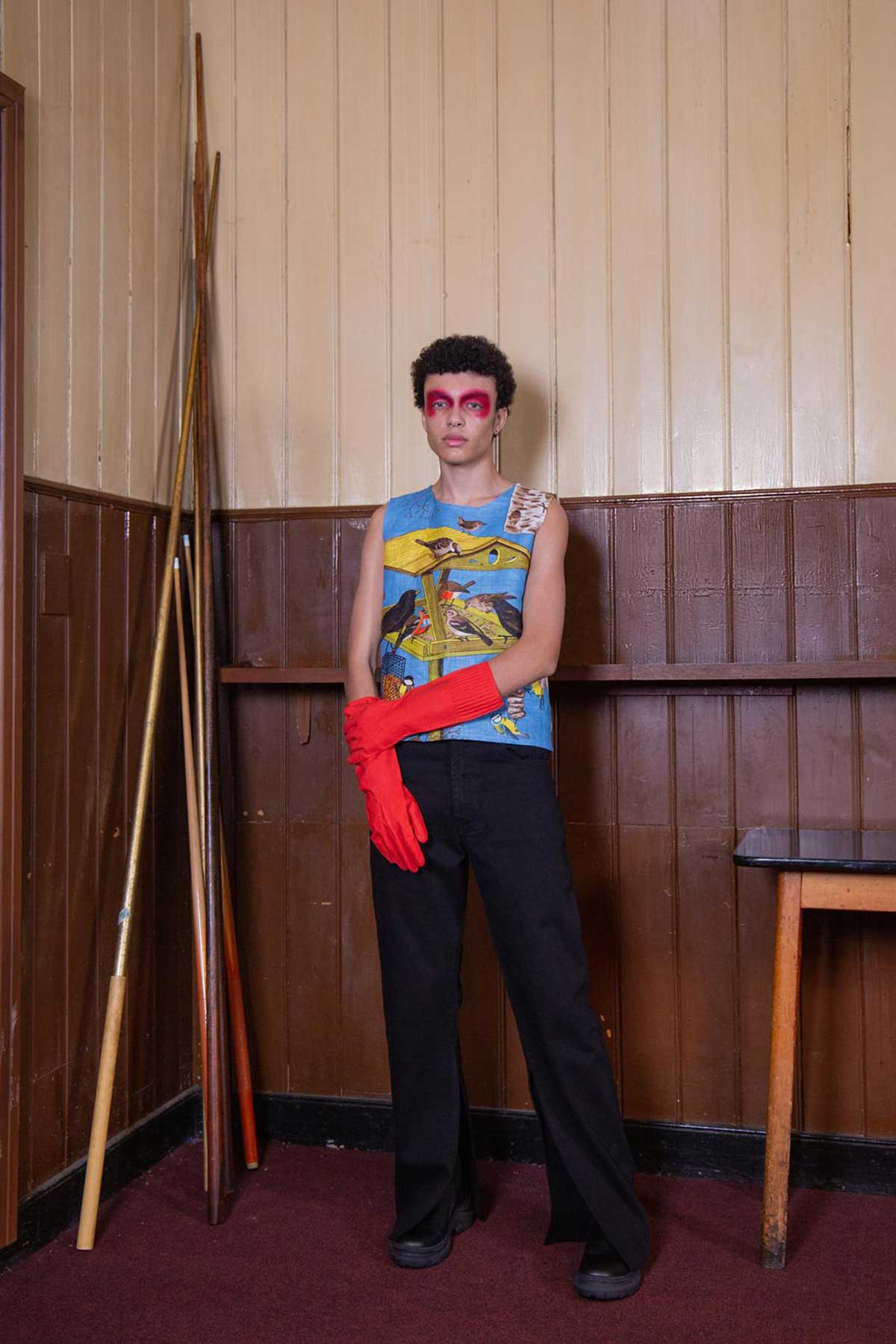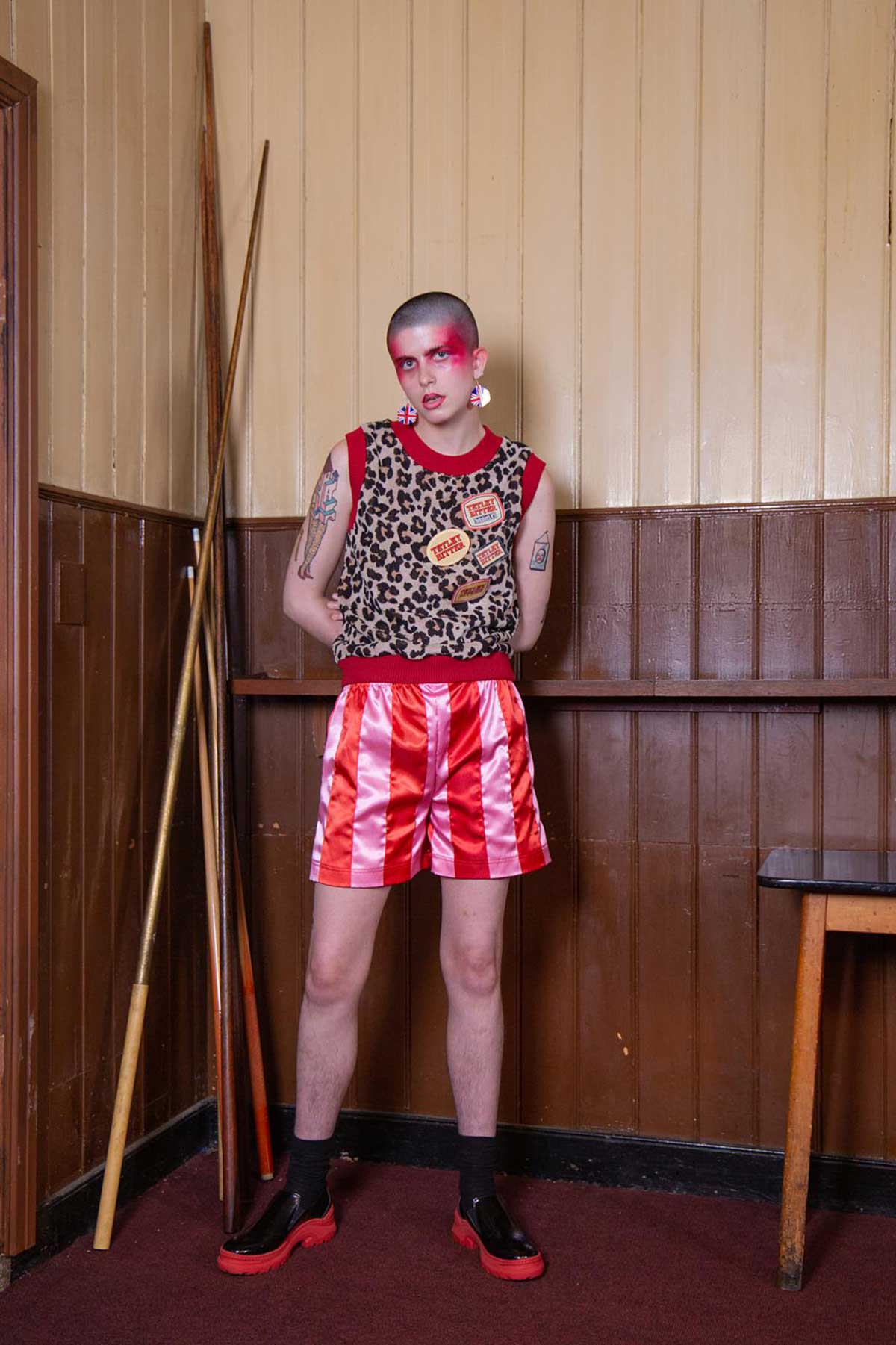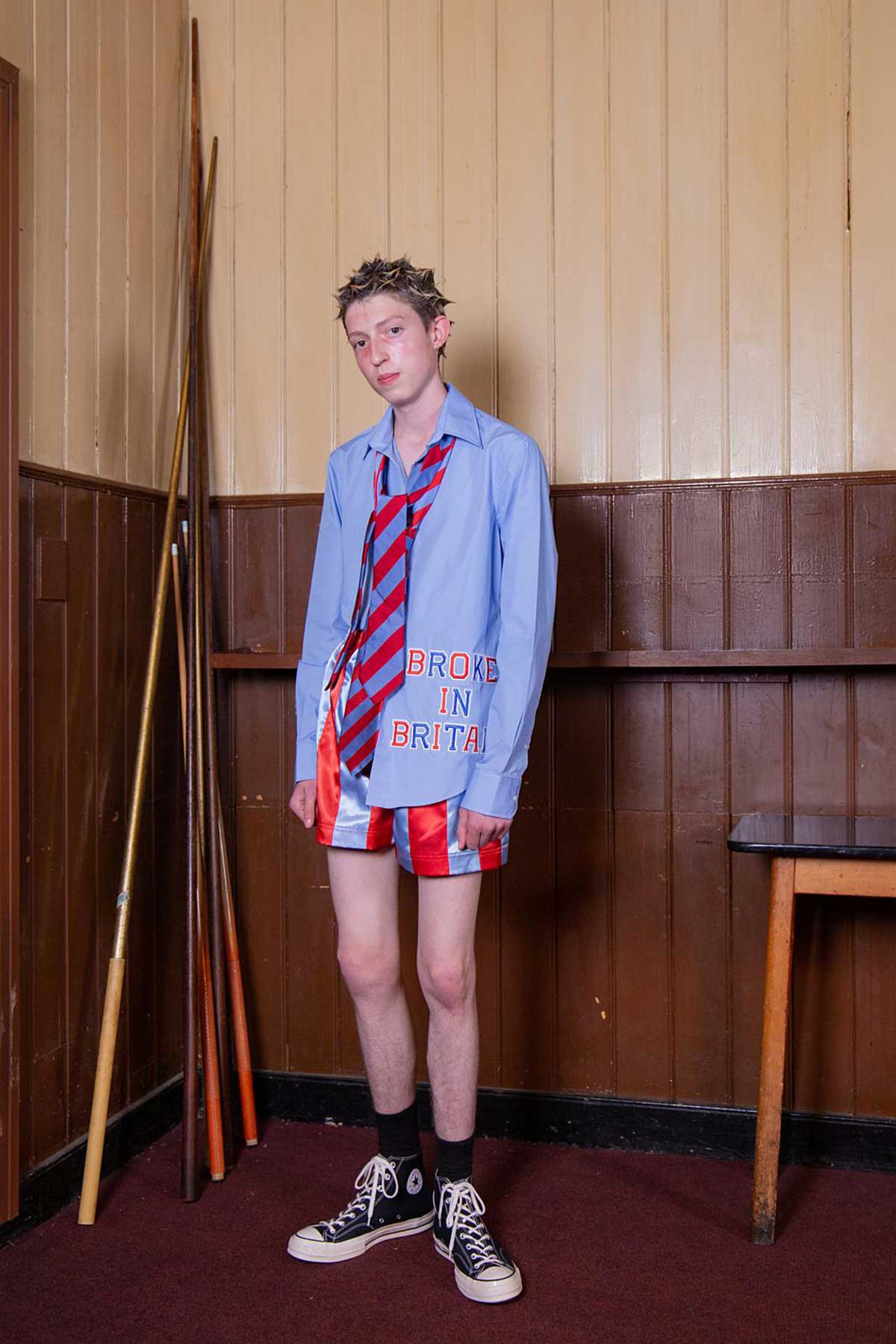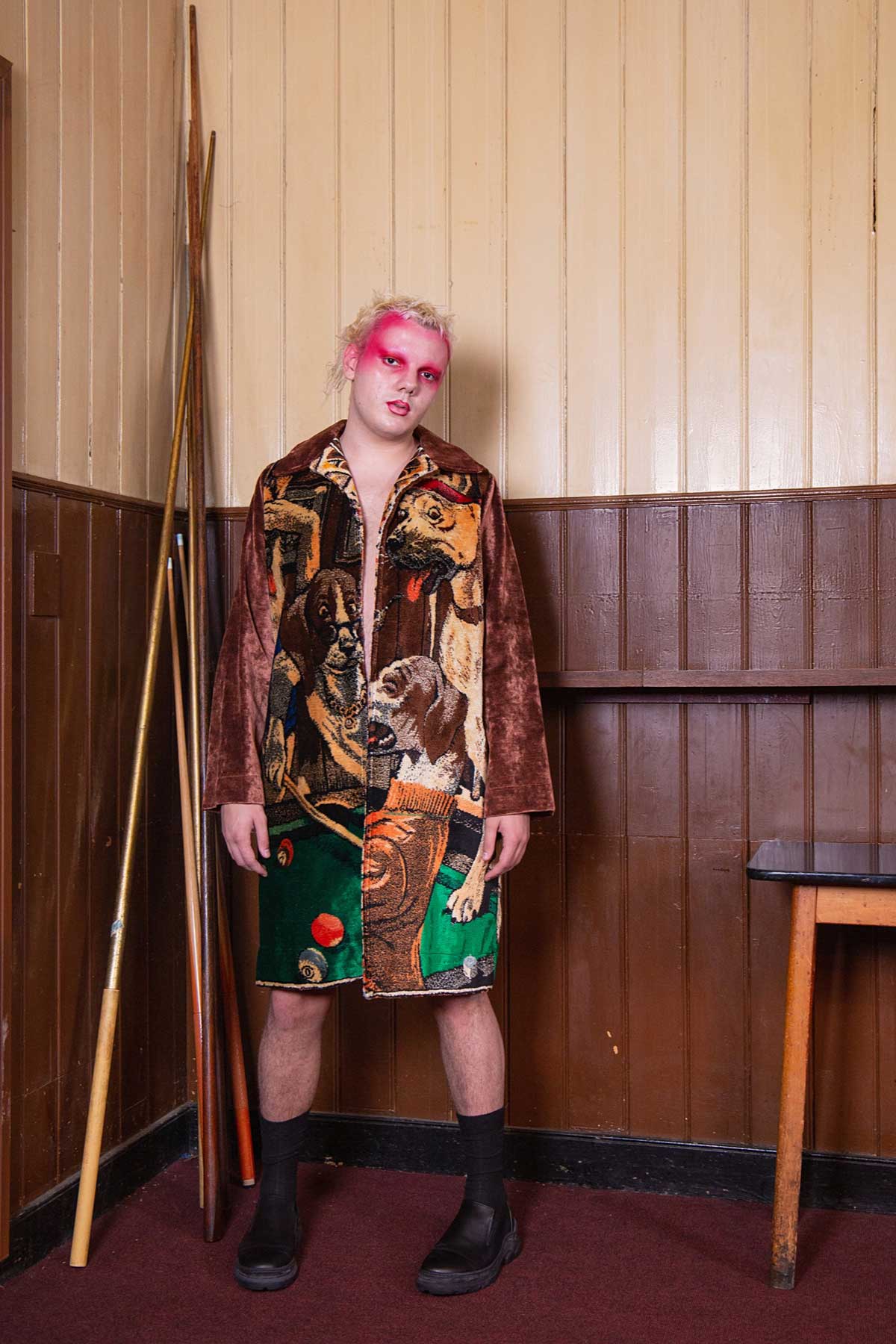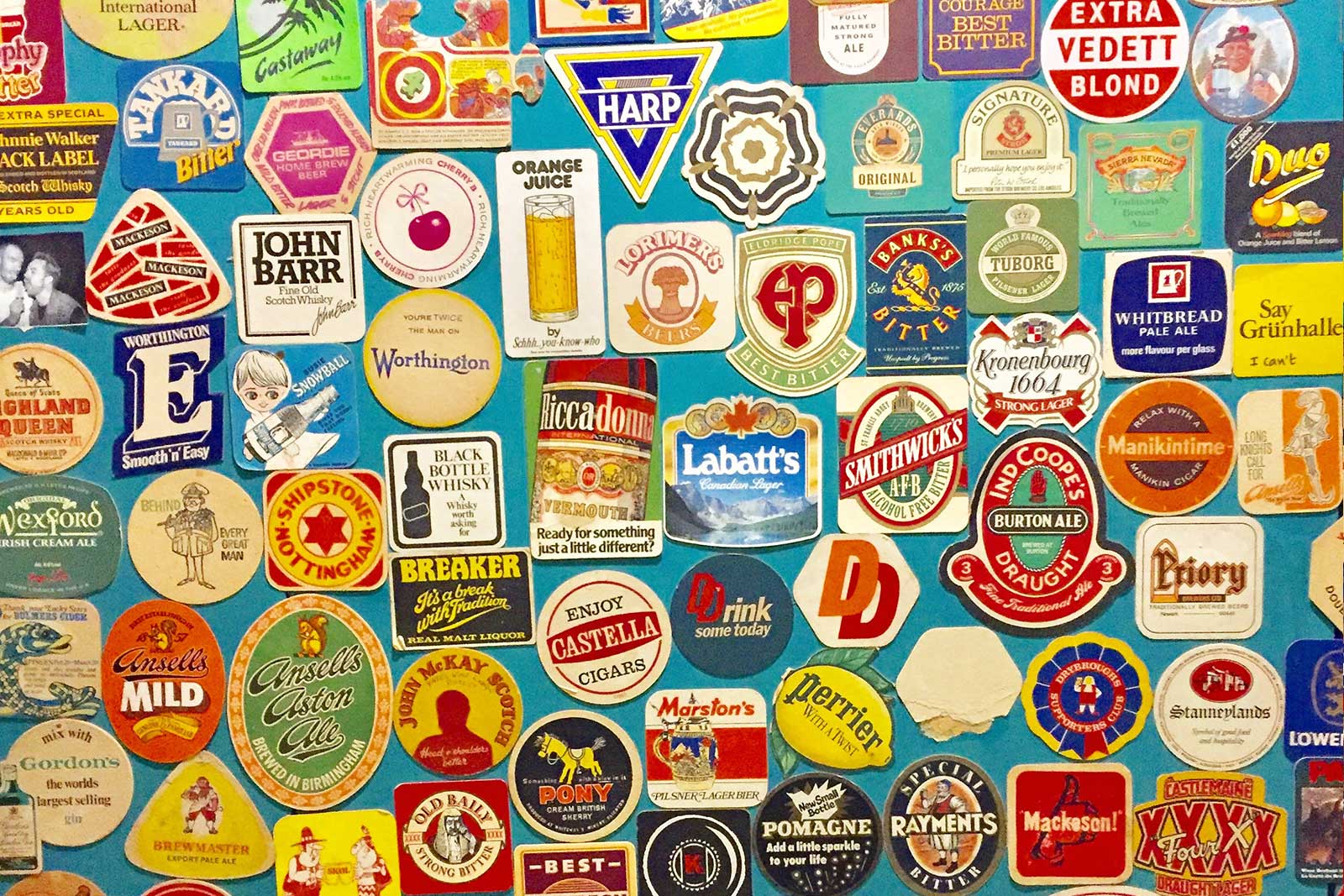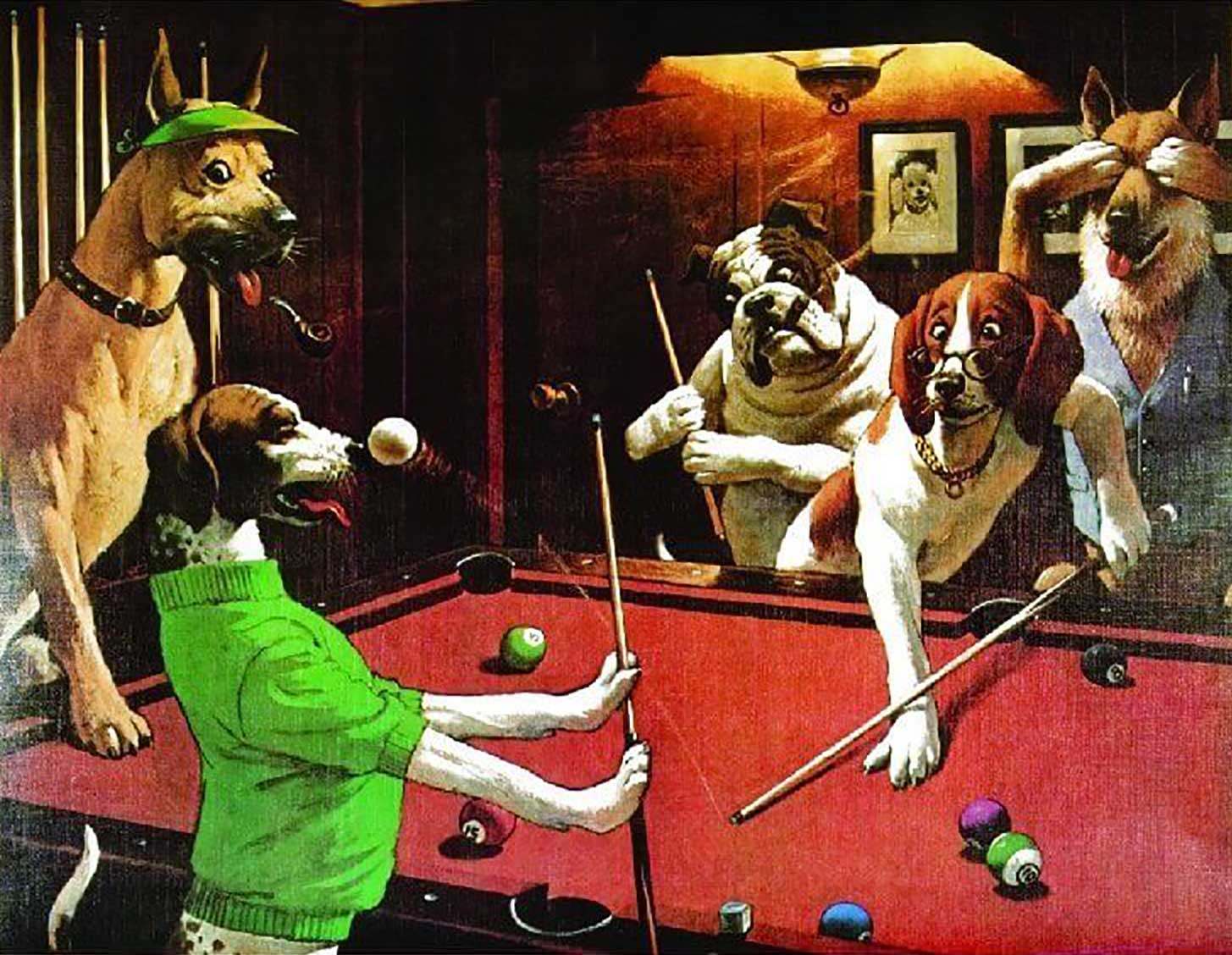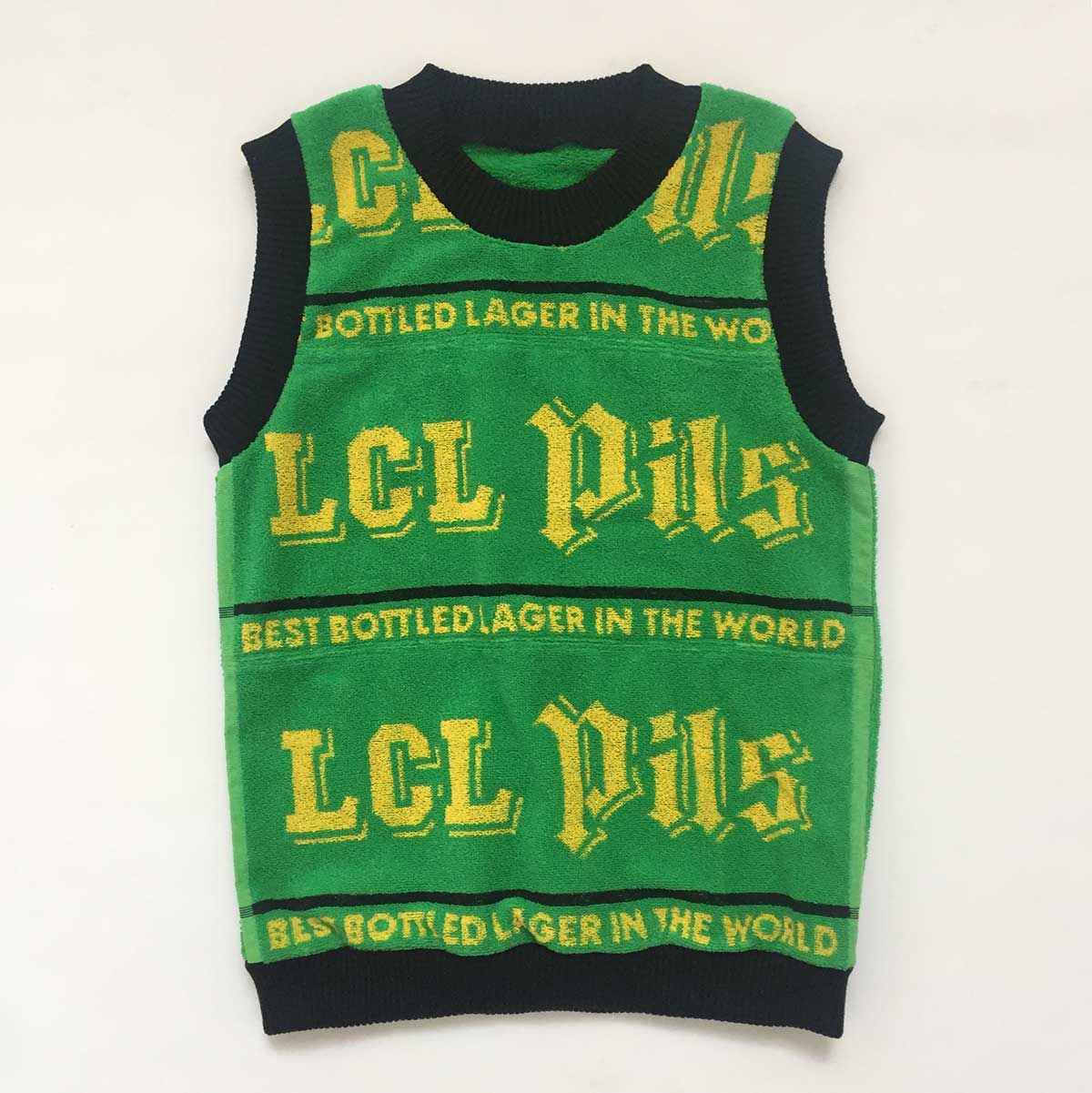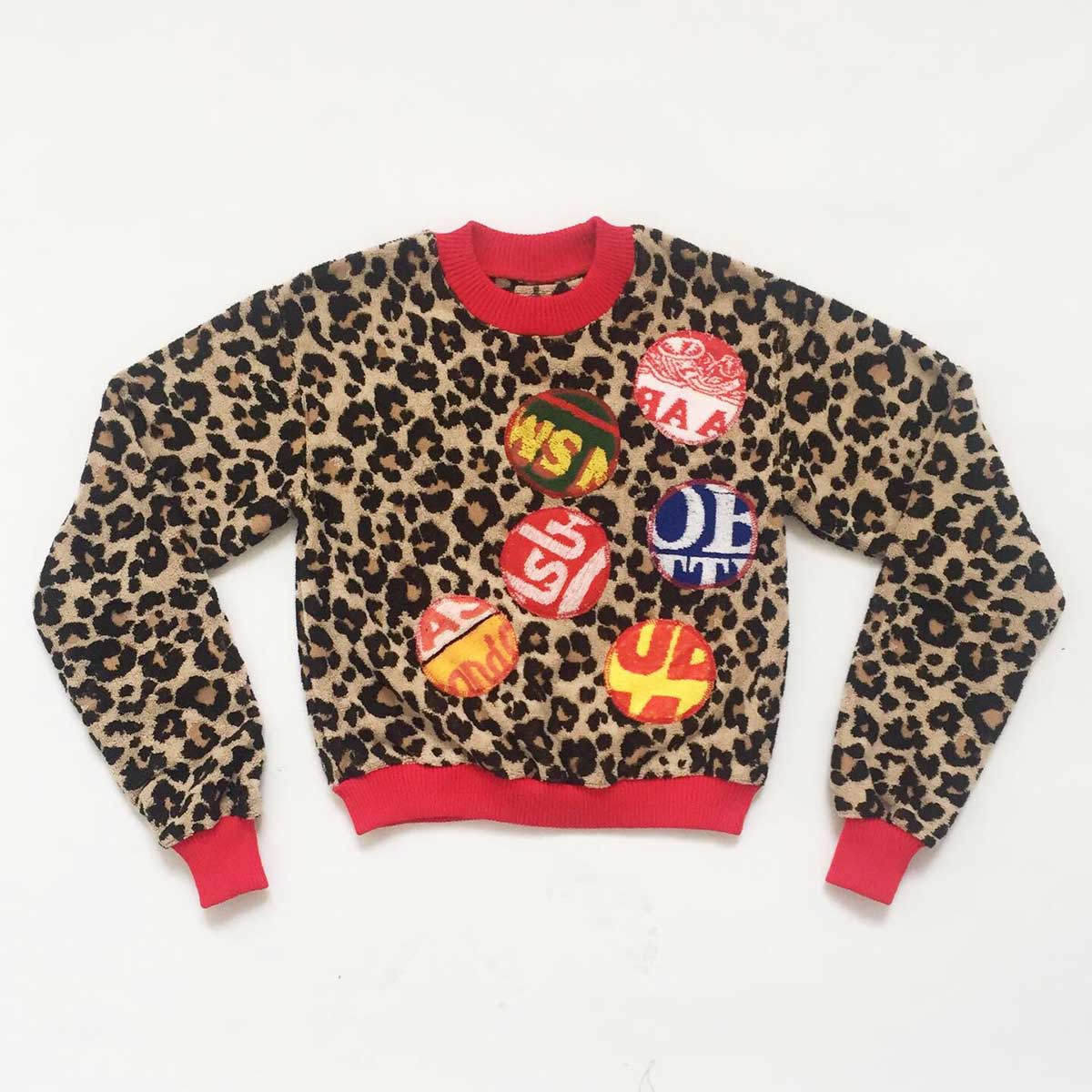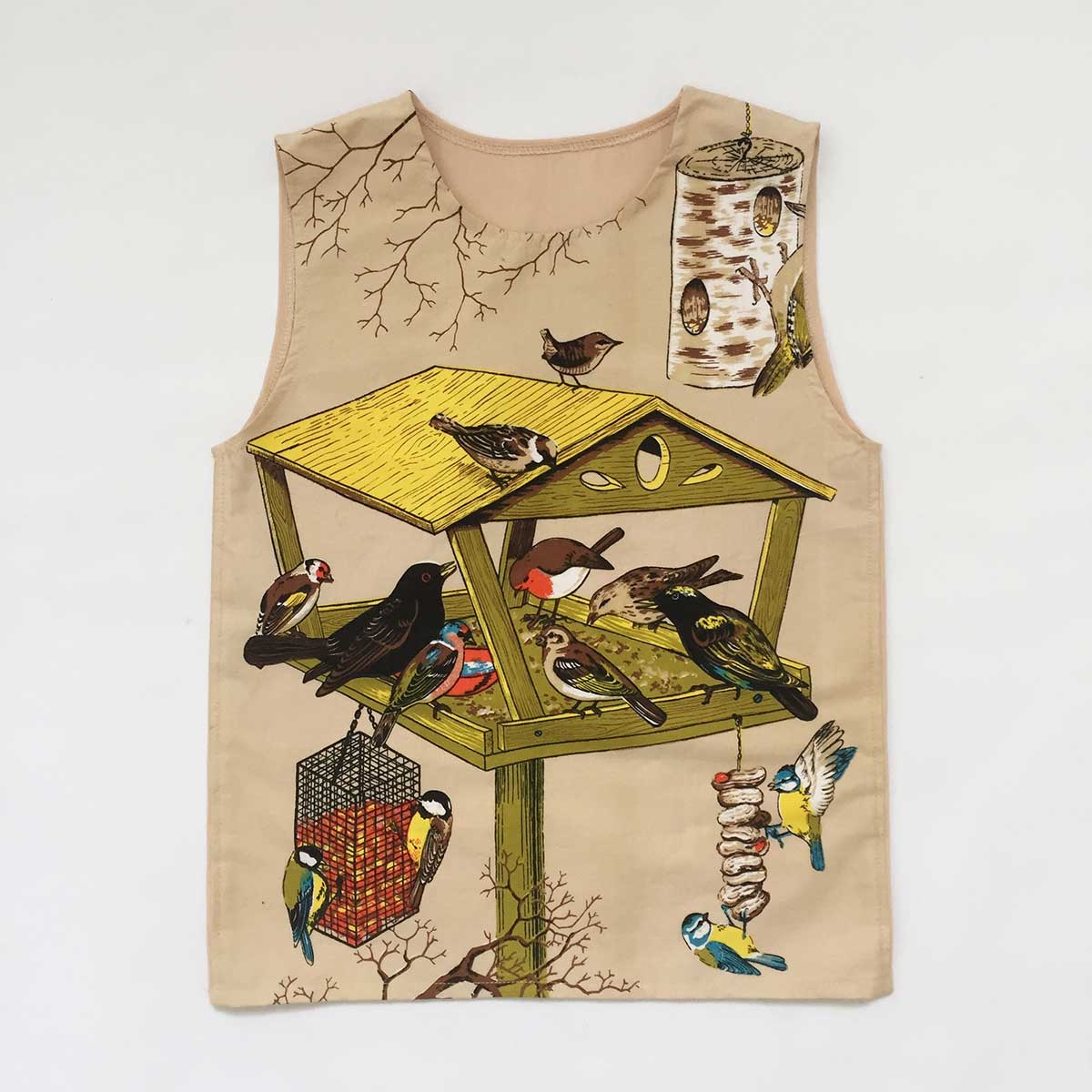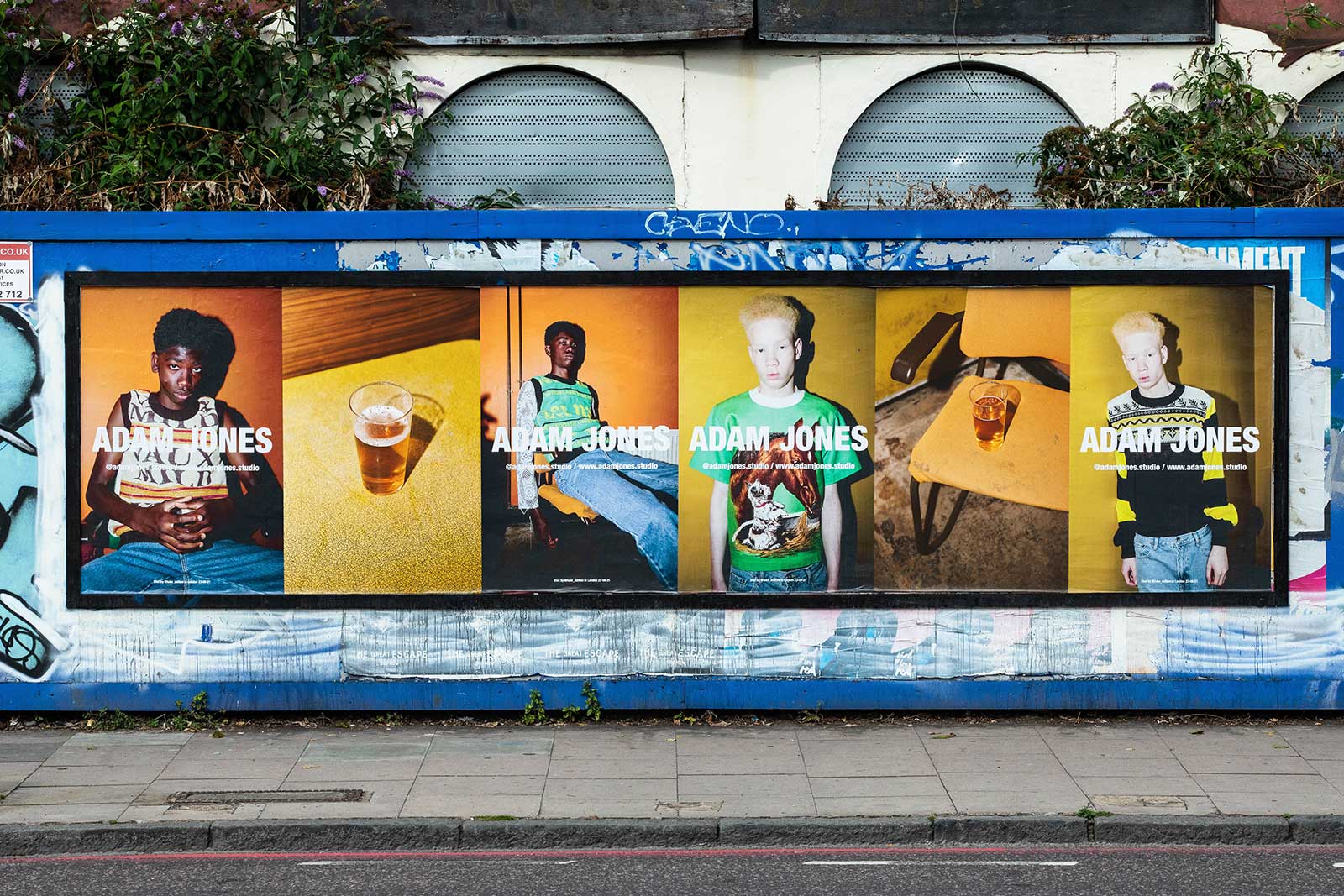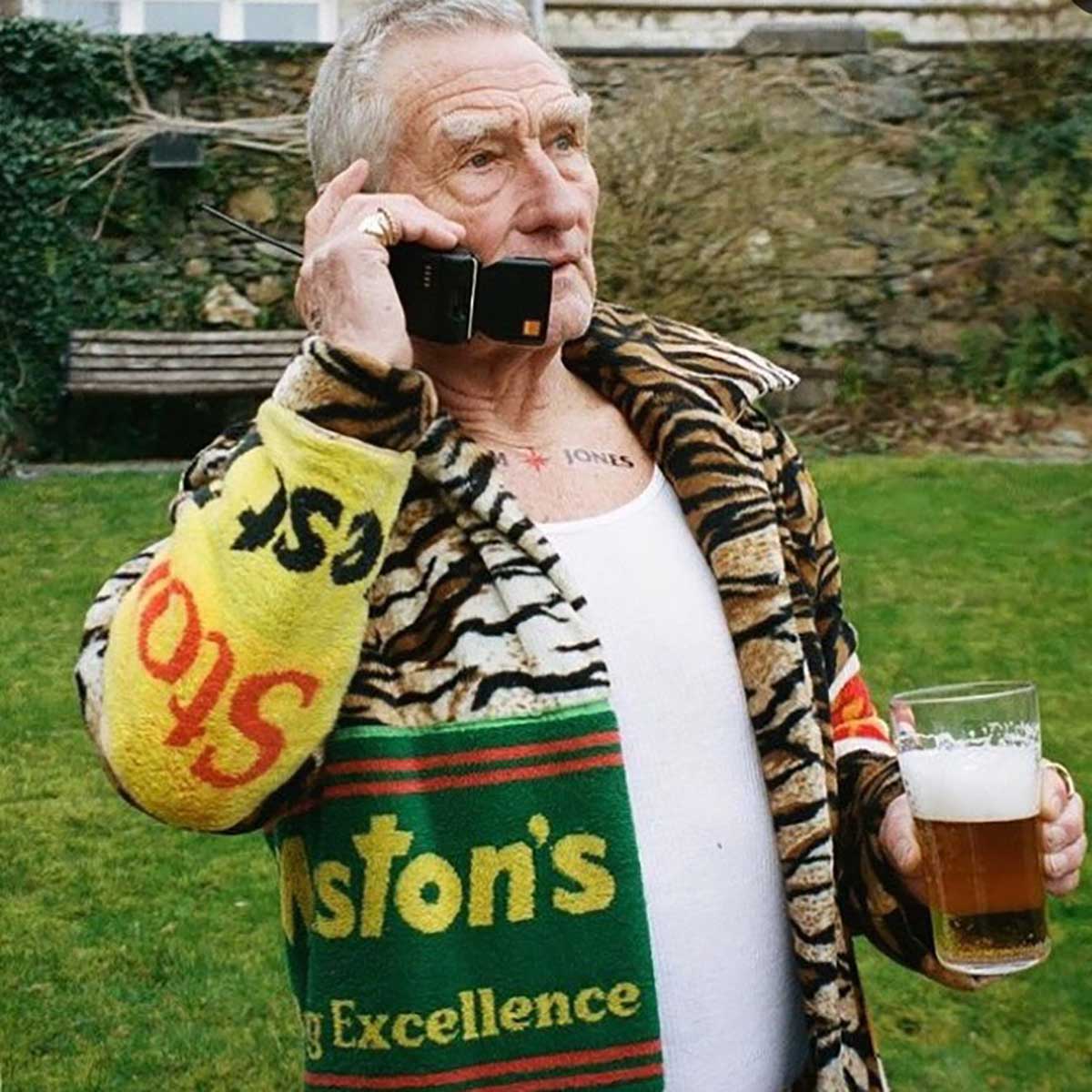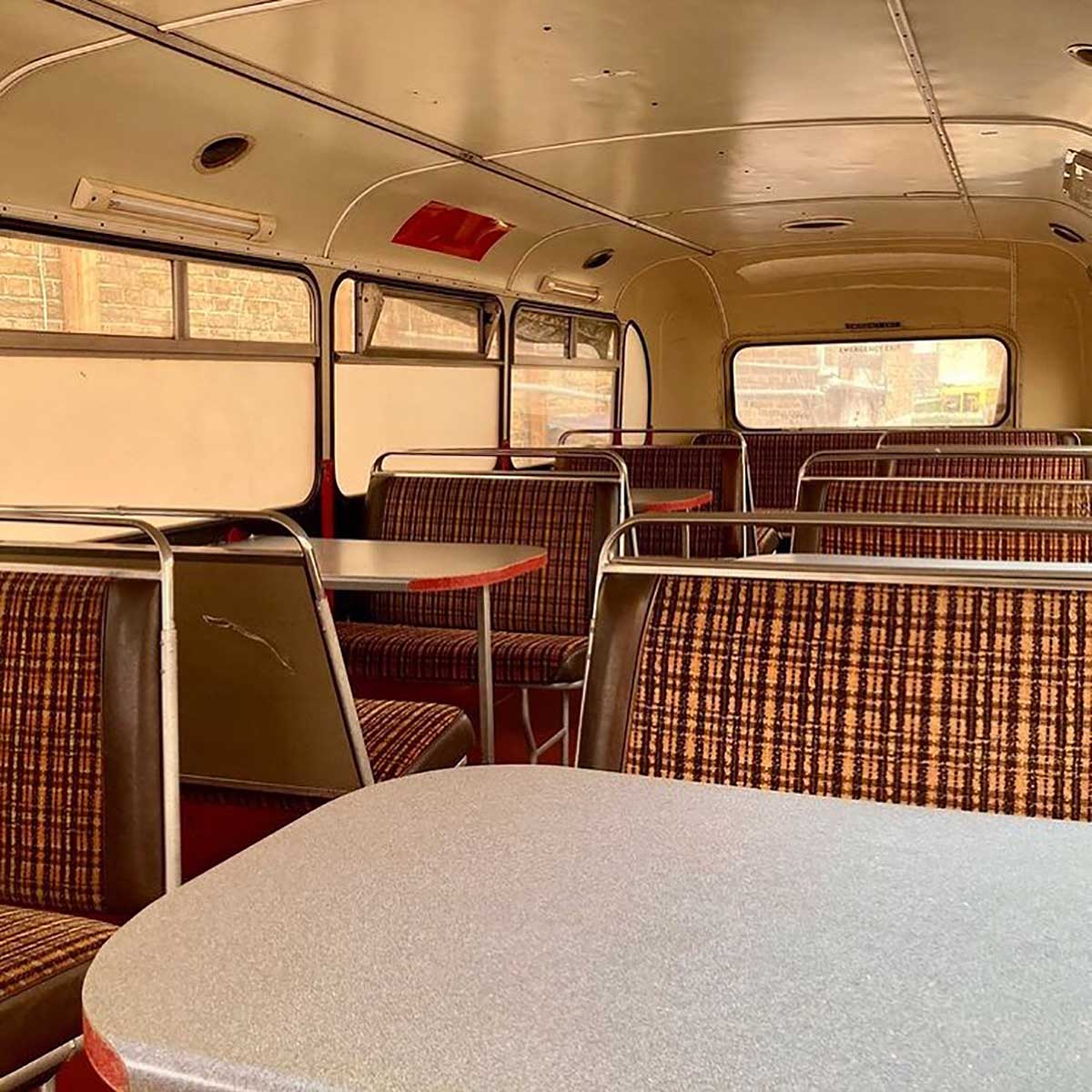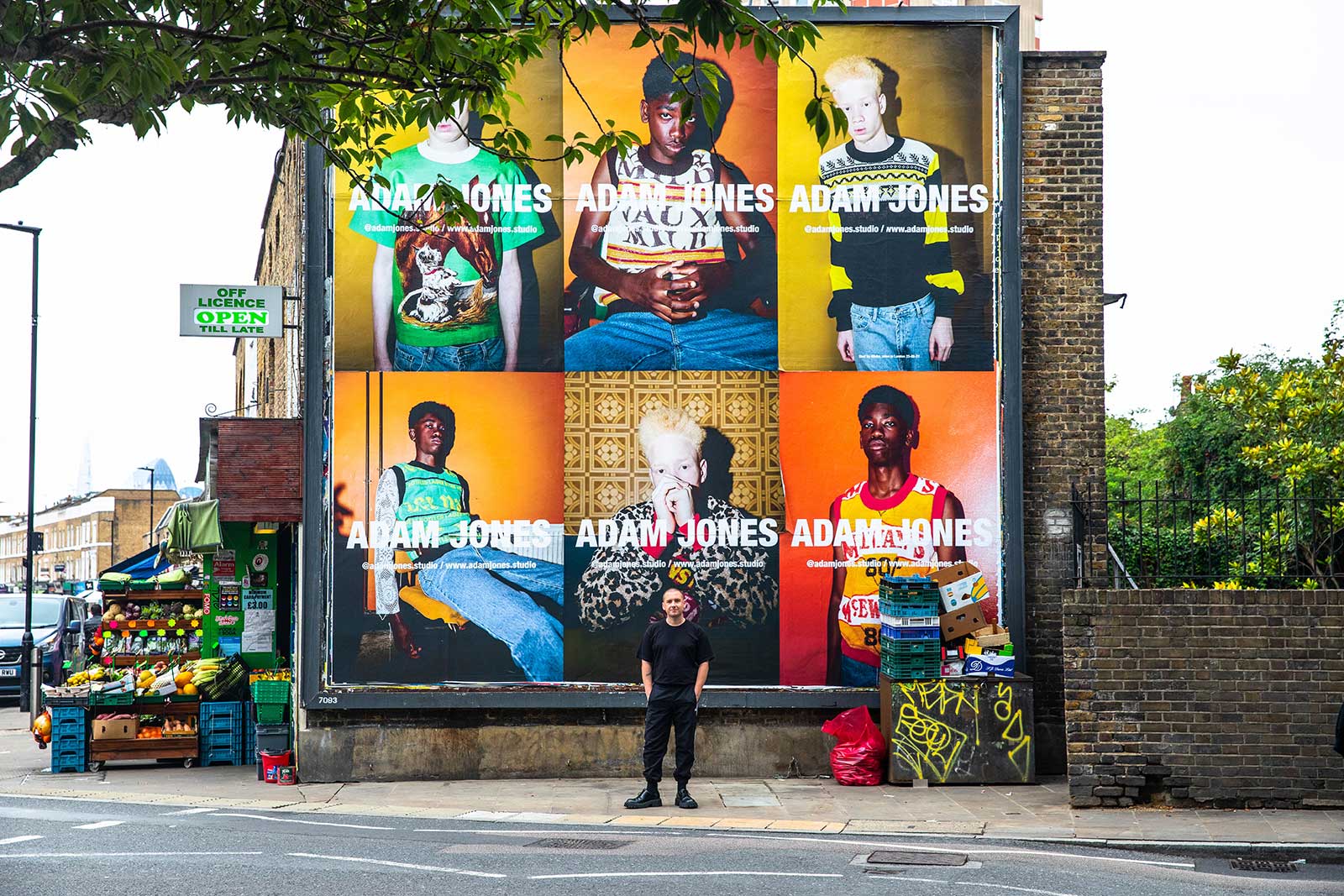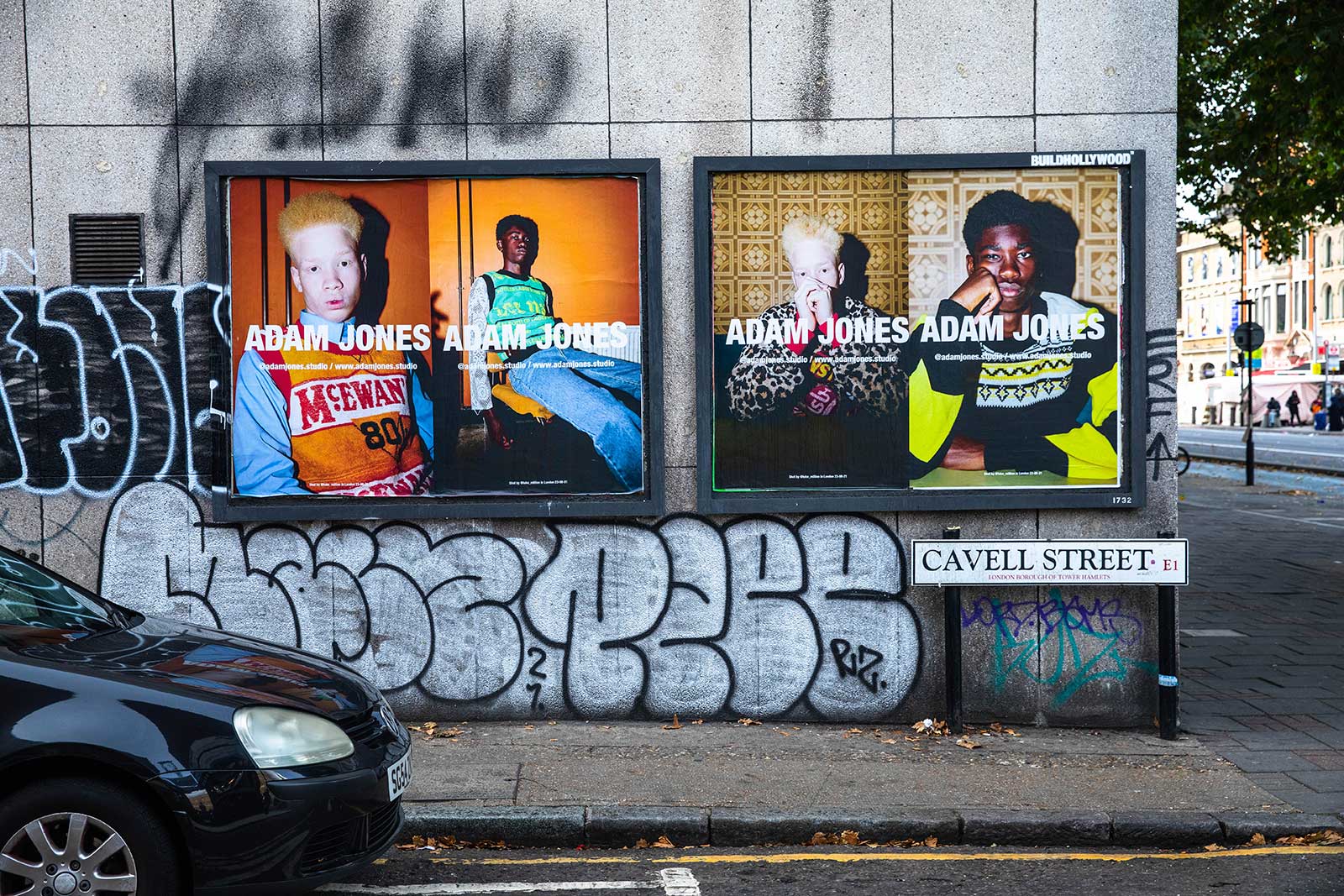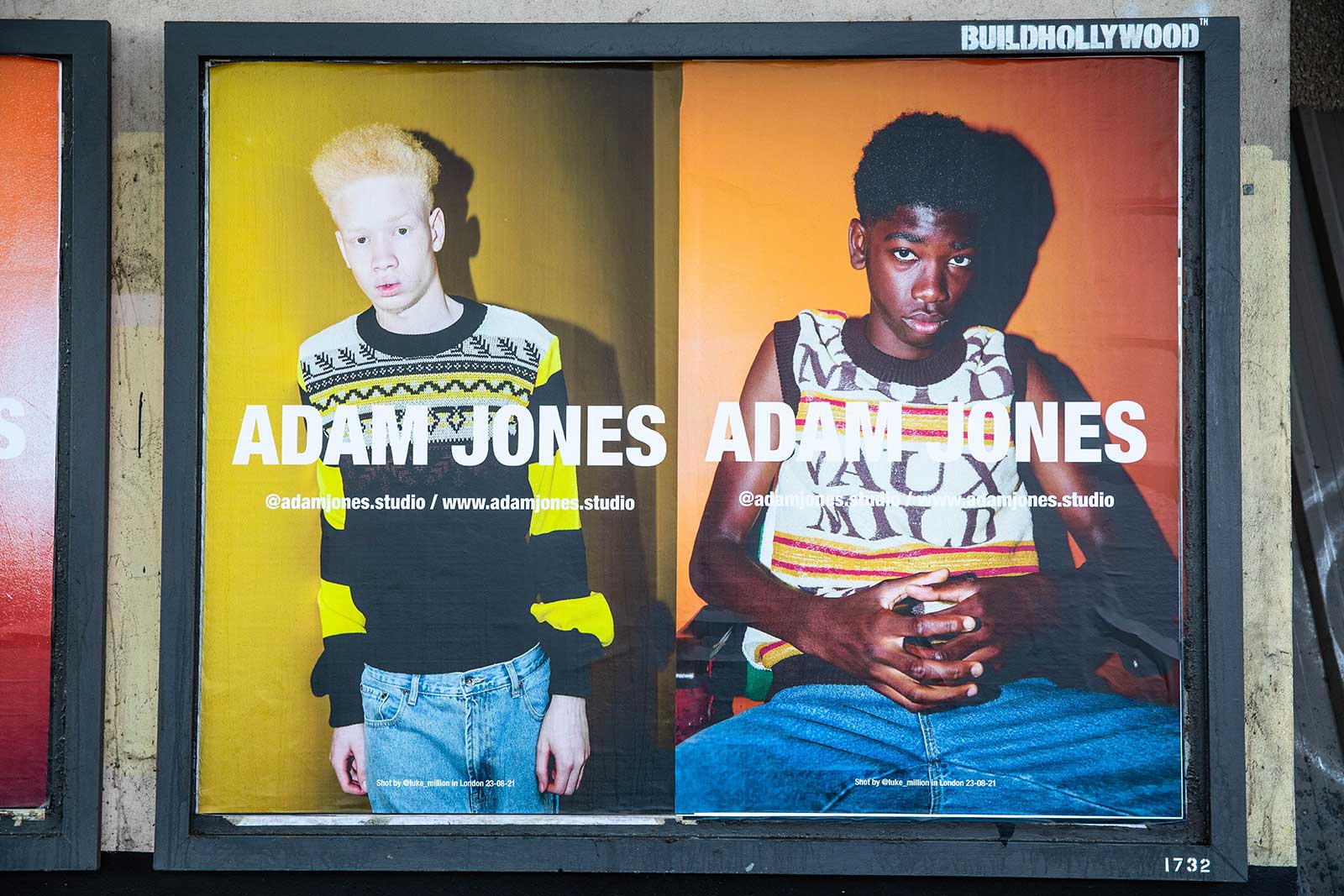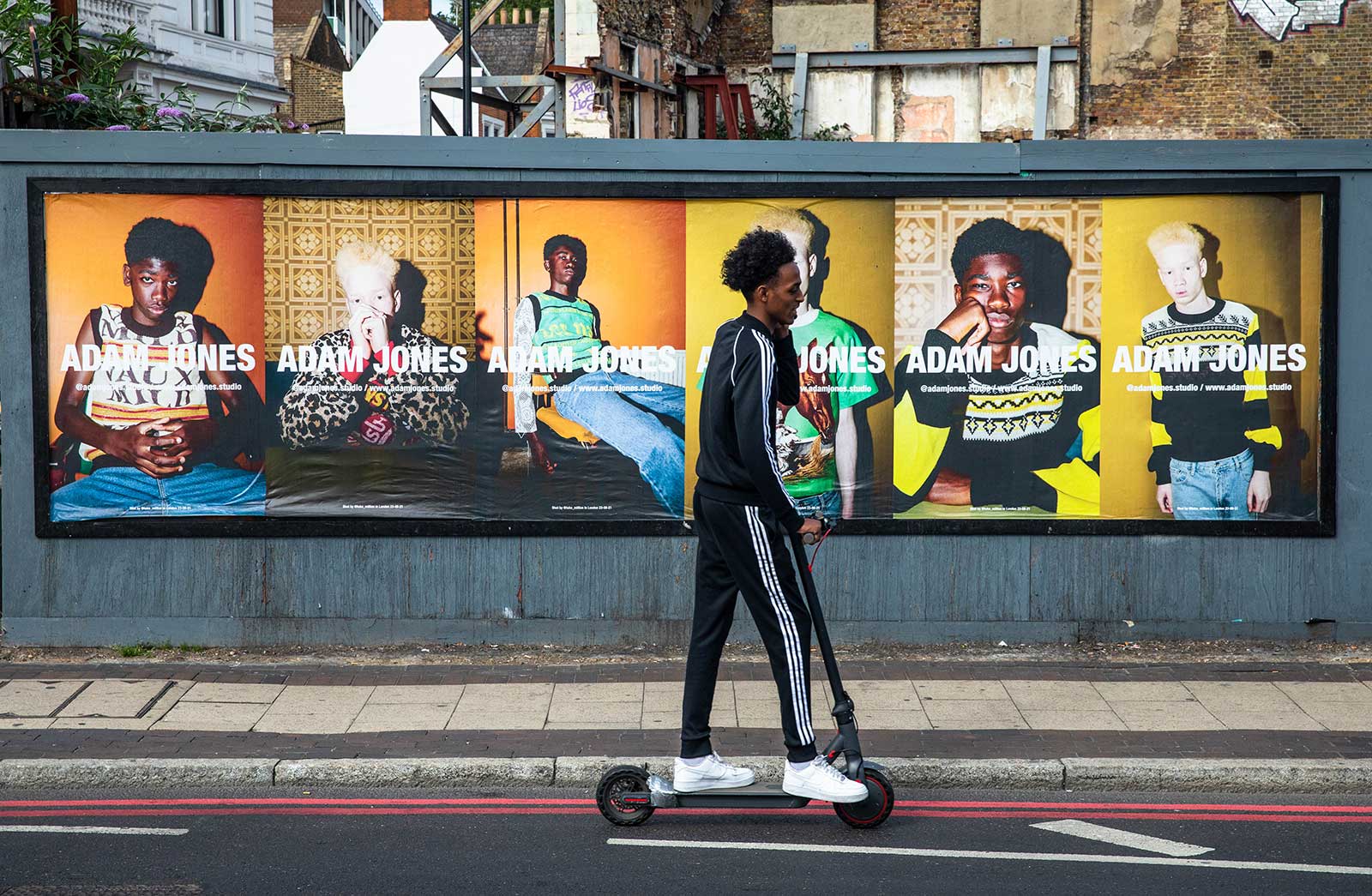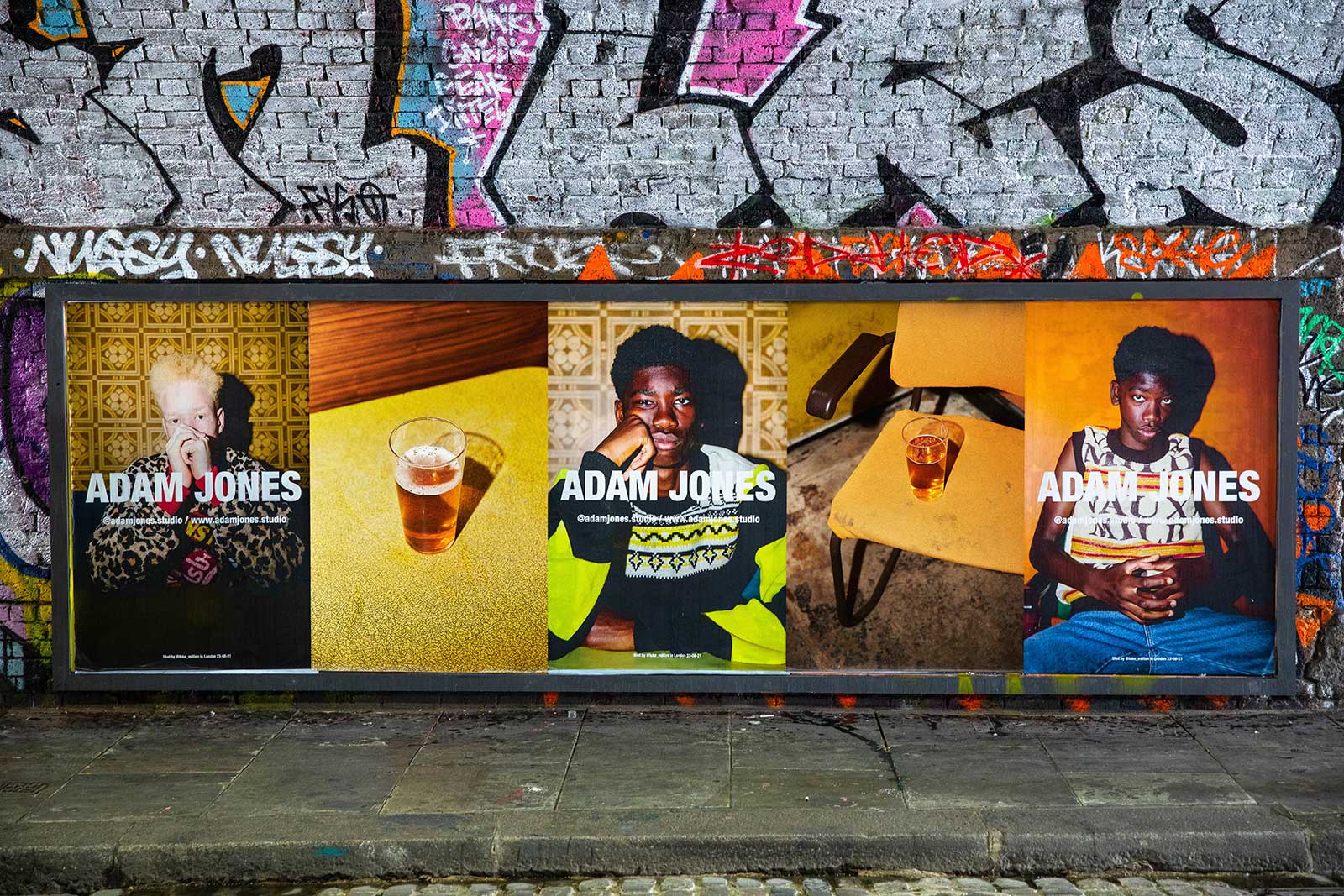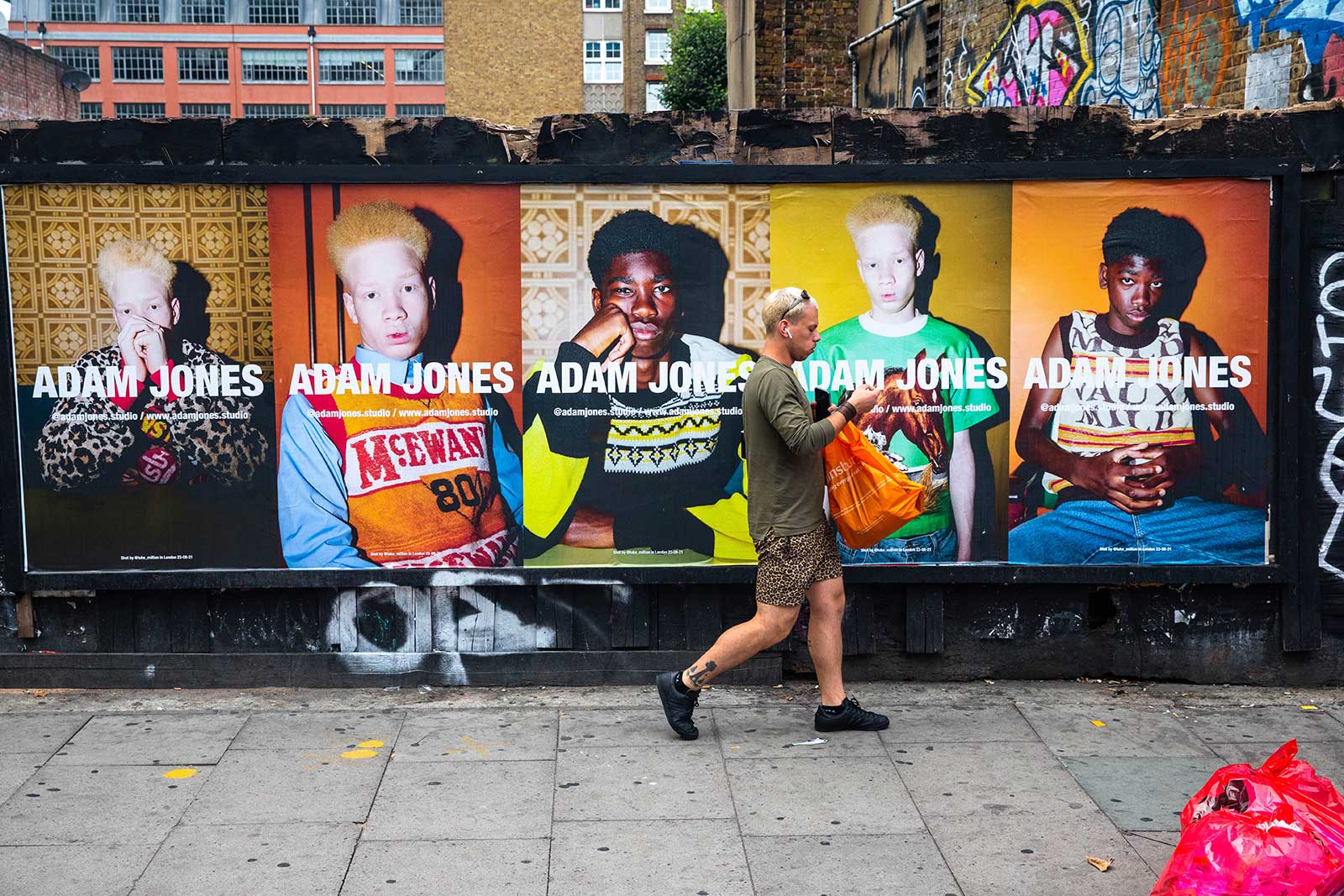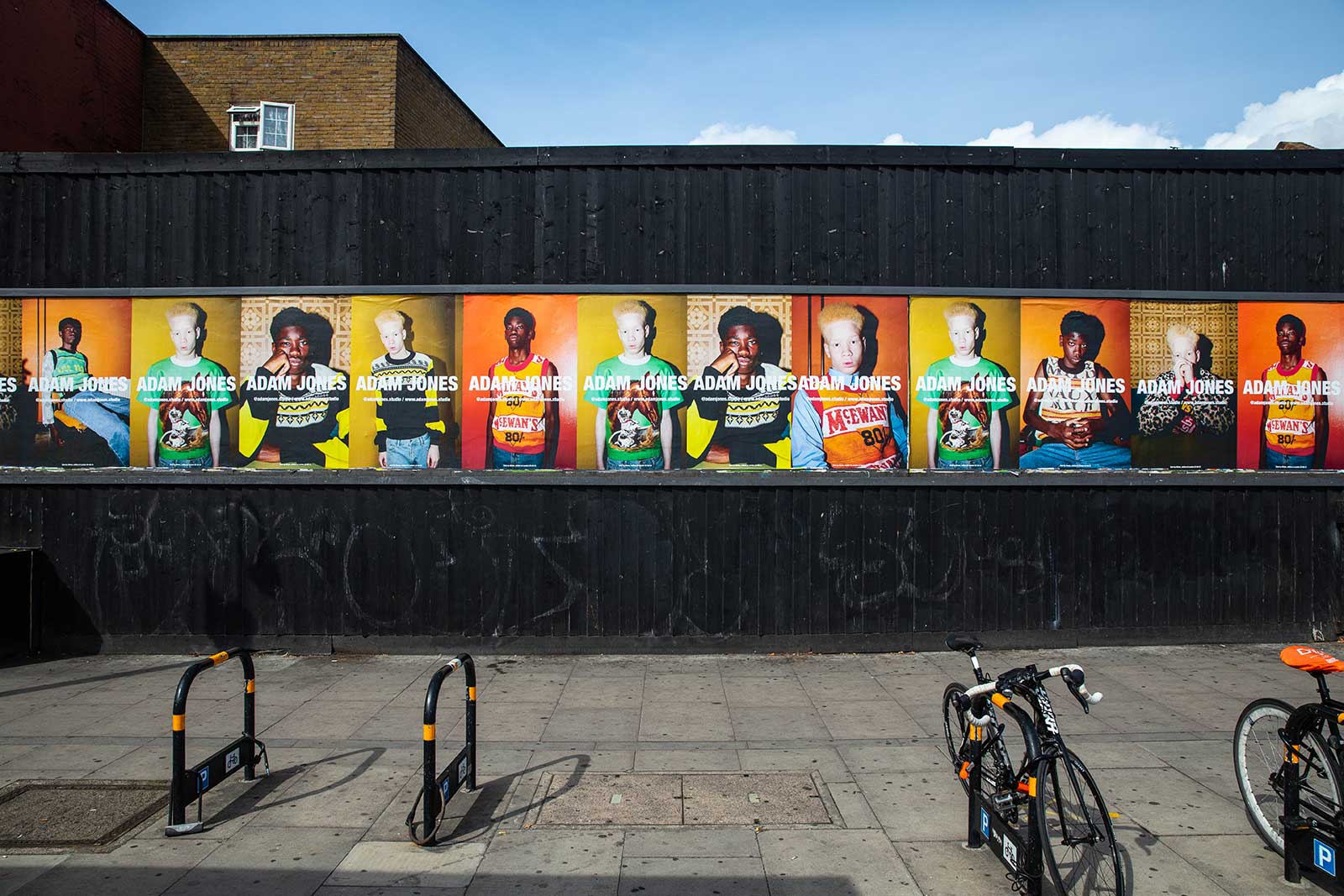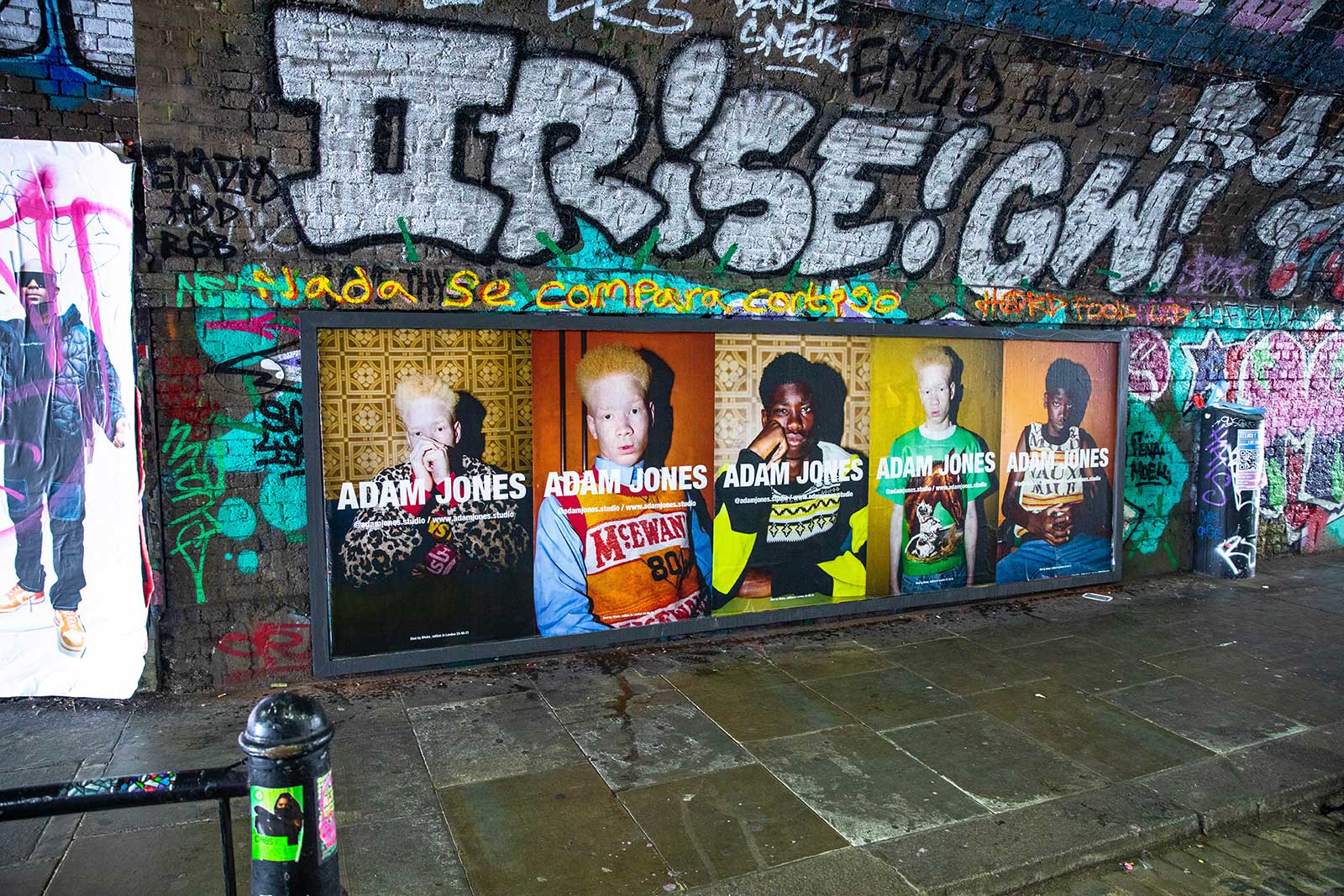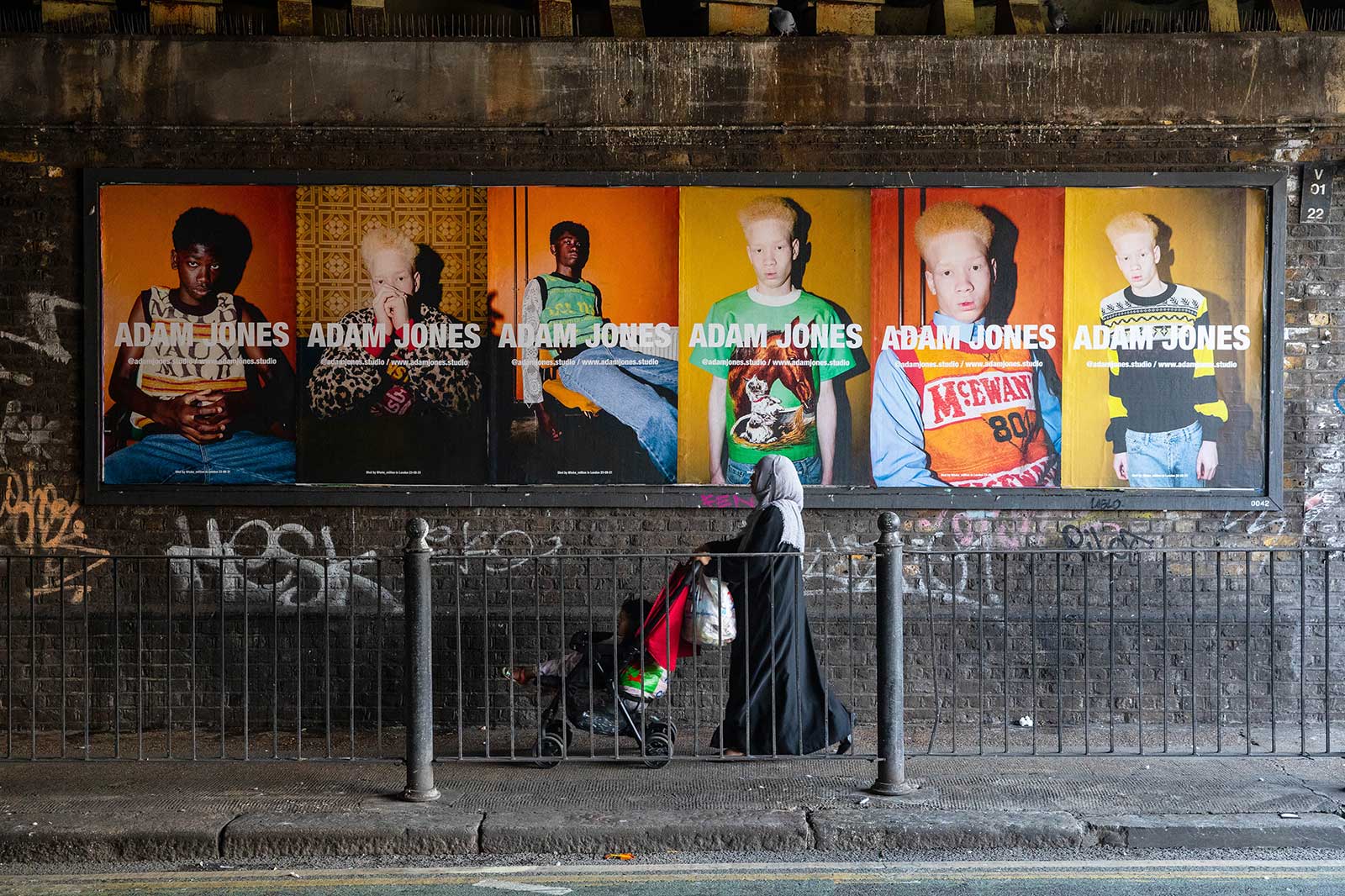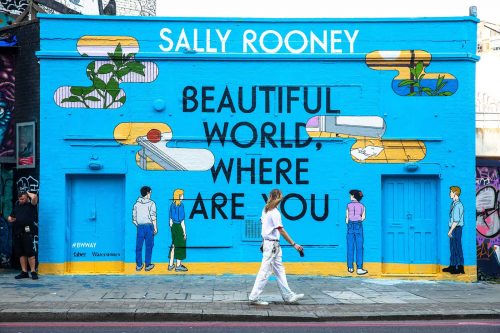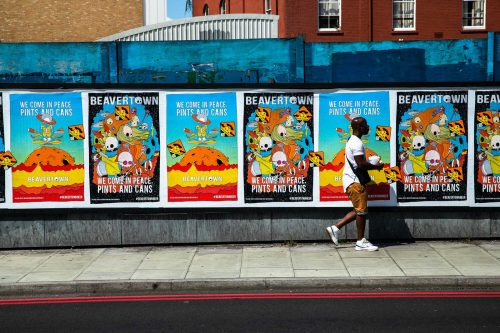Your Space Or Mine
Adam Jones
As billboards of his work appear in cities across the country, we speak to the Welsh designer about his distinctive brand of pub-chic.
Adam Jones’ spiritual home is the traditional boozer. Finding the decor of these British institutions endlessly inspiring, he tells us, “When you’ve got an eye for fashion, you can’t help but notice the wood against the green pool table on top of those red, brown, orange sun-bleached carpets. It’s a lot of colour and texture for the mind. You could just sit down there and make the entire collection out of that room.”
The 30-year-old fashion designer with an eye for kitsch has made a name for himself by repurposing original beer towels and turning them into a range of (which have recently been spotted on the likes of Dua Lipa, Nothing But Thieves, and Sports Team). He even used a pub – where he had a bar job at the time – as a venue to show his first collection during London Fashion Week 2015.
In the wake of launching his latest collection, Jones is the most recent emerging designer in our ongoing Your Space Or Mine project. Shot by photographer Luke Million, this series of billboards feature Jones’ newest sartorial creations presented alongside classic archive pieces and photographed on location in a South London former-Job Centre-turned-bar – a time capsule of peak-1970s decor.


